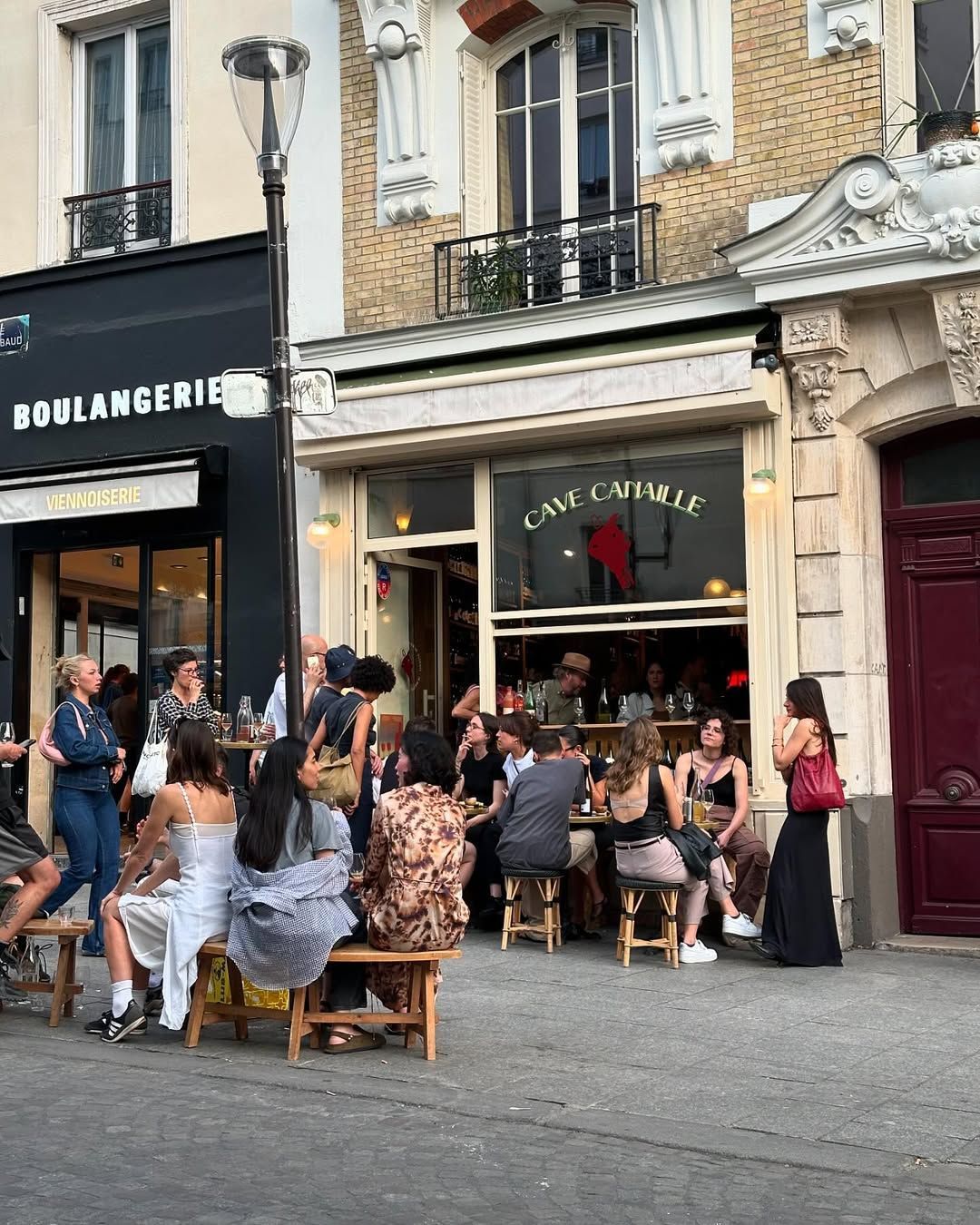
The Louis Vuitton trunk on the Champs-Élysées is at the center of a political dispute The legality of this installation is being questioned
While Bernard Arnault indulges once again in a life-sized game of Monopoly, he might just find himself facing a "prison stay" at the behest of his rivals, The Ecologists. If you strolled along the Avenue des Champs-Élysées in recent weeks, you couldn't have missed it. A massive trunk in the colors of Louis Vuitton has taken residence at number 103 of the "most beautiful avenue in the world" since last November. This giant trompe-l'oeil actually houses the construction of the first Louis Vuitton-branded hotel, covering an area of nearly 6,000 m².Although on the surface, this project might seem like another demonstration of Louis Vuitton's dominance in the luxury industry, it conceals a much more complex legal and environmental battle.
@explorefrancetv Have you seen the new Louis Vuitton luxury hotel in Avenue des Champs-Élysées in Paris? #paris #champselysees #louisvuitton #luxury #hotel original sound - Explore France TV
Since its installation in November 2023, this imposing advertising trunk has faced strong opposition from the ecological group. Today, they demand its removal on the grounds that, after legal analysis, «it would be in violation of the applicable regulations,» according to their elected officials. A showdown between LVMH, the City of Paris, and the ecologists that is about to reach its climax at the Paris Council, where the final decision on the fate of the trunk will be made. In this tense atmosphere, the threat of a seizure by the Administrative Court hangs like a sword of Damocles. A saga full of twists that accurately reflects the complex dilemma between heritage preservation, environmental considerations, and economic realities.This confrontation is not a first for the party, which had already targeted the LVMH group the previous year. On that occasion, The Ecologists had succeeded in having a Louis Vuitton-branded bag removed, carried by an imposing fifteen-meter-high statue representing the artist Yayoi Kusama. The temporary sculpture had not been considered entirely compliant with the authorizations initially requested by LVMH. This time, the Louis Vuitton trunk appears to violate three articles of law.
Yayoi Kusama installation at the Champs Elysées Louis Vuitton Store! (2023) pic.twitter.com/8xFjQ1M1eX
— Outlander Magazine (@StreetFashion01) January 10, 2023
At the heart of the ecologists' dispute is Article R 581.70 of the Environmental Code, a provision that clearly states that no advertising sign, installed for more than three months, should exceed an area of 10.5 m². This rule becomes a key element of their argument, emphasizing their belief that this limitation aims to prevent visual saturation, protect urban aesthetics, and maintain a harmonious visual balance in city spaces, especially on prestigious avenues like the Champs-Élysées. For the ecologists, this provision reflects a sensitivity to the cultural and architectural importance of these spaces. By pointing fingers at the LV monogram trunk, they highlight the crucial need to preserve these iconic places from the influence of excessive advertising. In the same line of reasoning, they invoke Article R 581.60 of the Environmental Code, establishing the regulatory outlines of advertising signs by imposing a maximum projection of 0.25 meters from the building wall. In this context, the "maximum projection" refers to the maximum distance by which a sign can protrude from the wall of the building to which it is attached. By exceeding this limit, the installation, from their perspective, not only violates a rule but actively disrupts the visual experience of passersby. Thus, the first article focuses on the maximum allowed size of advertising signs, while the second focuses on not encroaching on the surface of urban spaces.
Finally, Article P2.3.3 of the local advertising regulations of Paris addresses the admissibility of advertising on scaffolding, incorporating key nuances and exceptions. In their argumentation, the ecologists highlight a significant distinction: the trunk, made of steel plates, stands out distinctly from the traditional image of advertising on scaffolding, usually associated with stretched canvas sheets. They assert with conviction that this case does not comply with the standards set by local regulations. Their argument concludes on the need to ensure compliance with the rules established, insisting that no one should be exempted. Despite the party's strong arguments, the City of Paris defends its authorization under the right to signage, proposing a substantial tax for its installation until 2027. A disappointing but unsurprising response because it is evident that behind this affair, the undeniable weight of LVMH's fame plays a crucial role. As a luxury giant, the conglomerate exerts significant influence, potentially swaying decisions in its favor. This complex dimension adds a layer of intrigue to the case, where the notoriety of some may influence the outcome of the story.















































